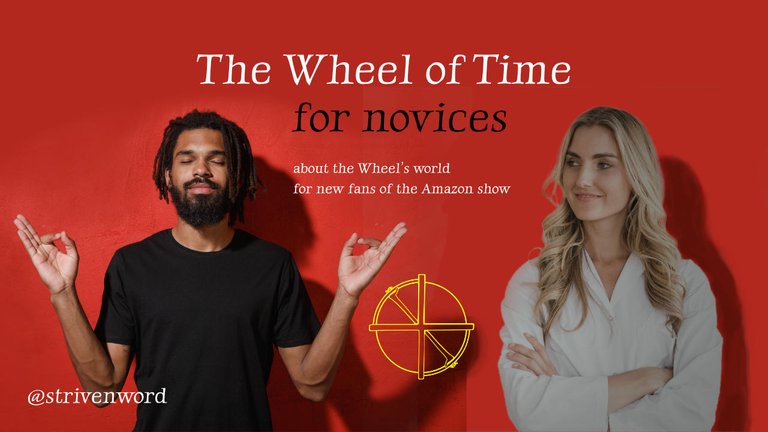
The arrival of The Wheel of Time on Amazon Prime last month was one of the most significant media events of 2021. This was truly a landmark occasion for fans of the long series of epic fantasy books, which were published during the vast expanse of time between 1990 through 2013. We had been waiting for our fantasy world to come to life on the small screen for basically a whole lifetime. Now that Episode 1 of the show has been topping the charts, this fantasy world will become populated by the fans who are interested in fantasy in television but who haven’t read the books.
I wonder what the future of the world of the Wheel will be, what it will mean for fans yet to become acquainted with the long epic. Viewing the eight episodes of episodes of Season 1 has gotten me thinking about a few points where the relevance of the most intricate alternate fictional world ever to have been created doesn’t seem clear. I’m here to share my thoughts on the story world and the character transformations that the fictional world facilitates for new fans of the franchise through the show, as well as for those who haven’t yet seen the show but enjoy fantasy media. There are no explicit spoilers here.
Twitter and The Telegraph reminded us back in November that The Wheel of Time is not following up on the popularity of The Game of Thrones but rather helped build the fantasy community to a point where A Song of Ice and Fire could break out into mainstream popularity. But even though the entertainment industry exalted that other fantasy series to mainstream fame, The Wheel of Time has always had entertainment value coming from the universal familiarity of its fictional world. I cannot determine whether or not the show is so far living up to its potential. My experience with the books reduces my ability to evaluate the show on its own merits, but it also gives me more context concerning the interpretations of its story world.
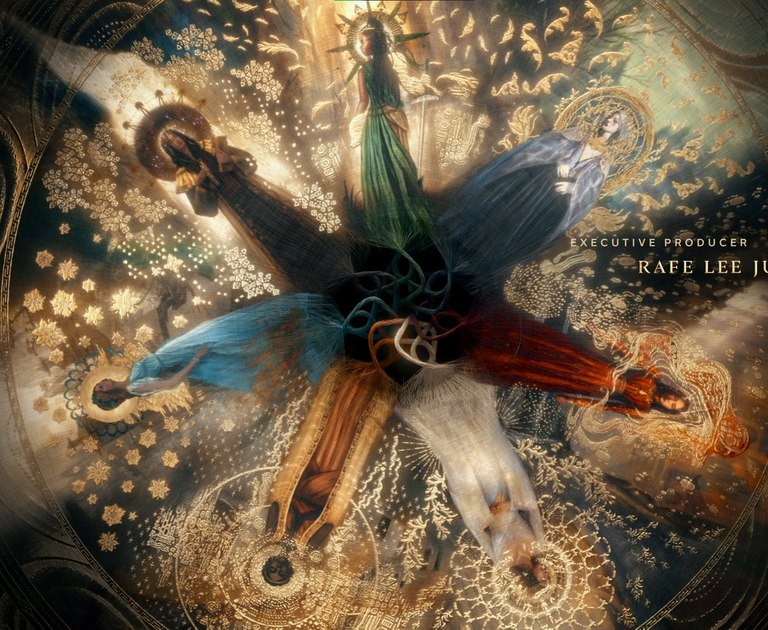
One of the most noticeable correlations is that the cast generally captures the core personalities that were developed in so much detail throughout the books. The shades of emphasis that the show’s interpretation gives to these characters provokes a discussion about the workings of the story, which will guide us on our journey through the culturally vibrant world and ultimately lead us down into the abyss of time and legend.
Mat is never a killjoy.
One of the leading boys is a free-wheeling soul named Matrim Cauthon, or just Mat for short. While being a flirtatious prankster that book fans may sometimes love to hate or hate to love, the grimness with which his personality is accentuated in the show is the most important character discrepancy so far between books and show.
The casting isn’t necessarily the problem. Actor Barney Harris appears to have a serious side that is not necessarily out of character with Mat’s relentless pragmatism during dangerous situations, his ability to get himself and his friends out of trouble using his charisma and his fast-acting courage. However, the writers of the show have made several changes. These affect not only to the background of Mat’s upbringing in the heroes’ home town of Emond’s Field, a technique used also with one of the other boys, Perrin Aybara, to accelerate the character arc so that some of the personality changes that occur over a long time in the books can be shown within Season 1. Show-Mat’s moral orientation and attitude feel different from those of Book-Mat. This different attitude direction might be leading to a significant plot device for the show; at any rate, it invites us to compare the two interpretations to decide what this cast of homely heroes has for us.
The “Emond’s Field Five” – Egwene, Nynaeve, Mat, Rand, and Perrin – are old fashioned protagonists. Whatever direction they may end up going in, the books never allow them to fall out of the readers’ good grace. Mat’s whining and reluctance are played for laughs in the books as in the show, but the books keep us identifying with Mat even when we pity him for his mistakes so that we remain committed for the journey.
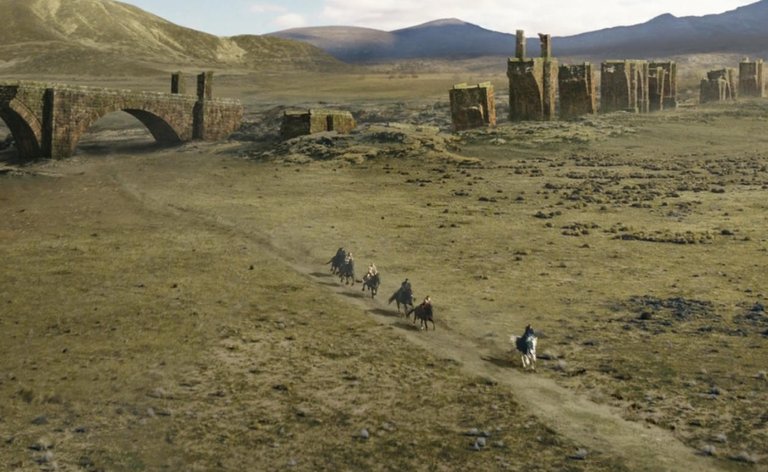
Of the five main characters, all three of the boys are reluctant heroes. In the books, Mat is generally a humble free-spirited man who just wants to enjoy good fun without hurting anyone and who does the right thing when circumstances pin him down. To change this fundamental orientation of this character would be to modify the story’s balance concerning its themes about duty verses freedom and its social contrast between male and female characters.
The story is about new adulthood.
From the very first scene in Chapter 1 of The Eye of the World, in which Rand al’Thor is walking with his father Tam to Emond’s Field, an effect of the characterization, mythology, and even the tangled drawn-out master plot is to send us back into the drama of our own adolescent and young adult years – or walk alongside us if we are young – marveling at our own power and awesome responsibility as men and women.
The dawn of adulthood and its inherent turmoil is the focus of the entire theme of the whole series, comparable to the way that persistence of hope serves for The Lord of the Rings. In Tolkien’s masterpiece, and even by extension in his entire corpus of work about Middle Earth, transcendent Hope takes center stage against the Void of despair and wicked tyranny, despite and even through the fated failures of the doomed protagonists and humble heroes. In The Wheel of Time, society’s devastation or salvation is shown to lie upon the shoulders of the individual, that is, upon the archetypal person struggling with his or her own personal turmoil with which destiny has burdened him or her at the cataclysmic initiation of adulthood. Robert Jordan created a whole world with a long mythic history that hinges upon the emotional decisions arising out of each person’s inner struggle between life and nihilism. Every reader becomes the Chosen One whose emotional conflicts and personal drama are causing the breaking of the world, and this drama is rooted in the social and personal chaos accompanying the newfound powers and duties of adulthood.
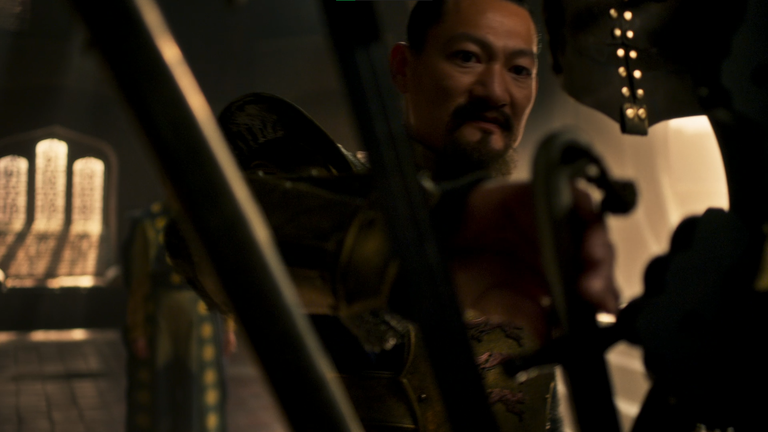
The mythology is gendered.
Viewers of the Amazon Prime show will have seen how gender politics is as relevant a topic in the world of the Wheel as it is in our world. In Episode 4, “The Dragon Reborn,” we begin to see the politicized attitudes toward men by different factions within the all-female institution of the Aes Sedai, the most fundamental and ancient establishment in the world of the Wheel. This is not out of keeping with the books, which have provided grounds for many a flamewar on Internets past regarding whether or not they are pro-feminist. The story world contains a material manifestation of female power, and though the show has already been more direct about how this power relates to gender politics, the theme is certainly present in the books.
More importantly and potentially more controversial is the gendered-driven mythology. It is not merely that the world-building and the nerdy origin myths presume an axiomatic existence of Male and Female; if that were all, the gender themes would hardly be worth mentioning. The immediate plot line that we see during the first moments of Episode 1 in the show is affected by this philosophical premise regarding the nature of gender.
The show made a slight plot change that has ramifications for the entire mythology. This change seems to be influencing the visual look of the One Power in the show and the lore surrounding it. In the mythology, the magical abilities seen in the story come from a gender-divided divine power that is said to cause the turning the Wheel of Time itself, a concept that looks very much like the Eastern mystical concepts of yin and yang. (In fact, the recognizable black and white yin-yang symbol was simply appropriated for the books without any modification.) The mythology of the Wheel world is inherently dualistic, and this dualism is explicitly portrayed in an essential, spiritual distinction between male and female that affects everything about the story from its high concept to the foundations of the plot.
The gender fixation is part of the coming-of-age theme. The emphasis on gender interacts with the young heroes’ character trajectories. If this sounds angsty in an awkwardly emo way, well, at times it is. Regardless of one’s beliefs on the subject of gender, Robert Jordan’s books can become uncomfortable. Something about details in the social interactions, without any particular sequence of dialog in the books being necessarily offensive, can feel a little weird when framed by the story’s evident fascination with the concept of essential gender. This occasional awkwardness is all the license the show will need to justify any amount of stilted innuendo, as has already been glimpsed. Whether or not this weakness flows necessarily from the gender themes is hard to say, but gender has its role in the grandiose, universal story that Robert Jordan brought to life with his vibrant cast of heroic and deplorable women and men.
While gender is an essential part of The Wheel of Time and should be considered for its place both in the mythology and in the story’s themes, it is not by its construction of a gender-essential universe that this series achieves its inclusive, far-reaching resonance, which makes it a platform for applying universal human experiences. Another essential element of its mythology is responsible for that.
The world is religious.
I was surprised that the show shows the spiritual practices of Robert Jordan’s fantasy world with such detail and frequency. Each of the eight available episodes contains details that tell us how complex and interesting the culture of the world is. Each episode specifically depicts details regarding religious practice or references the religious mythology. This is perhaps best exemplified in Episode 6, “The Flame of Tar Valon,” where an important oath from the books is recited in a context that also references the fantasy world’s theological creation and salvation themes.

As an old fantasy fan who has always been interested in the relationship between religion and fantasy, I am of course happy to see that the show has not declined to portray both the mythological and the cultural aspects of religion in Robert Jordan’s works. However, the direct depiction of the religion in the show is almost too powerful. It is not powerful in a preachy way, not relevant to real life in a way that would be controversial or uncomfortable, but it is heavy and striking – perhaps to the point of distortion. I suppose that at one time such explicit use of religion would have been unpopular in a TV show, but nowadays maybe religious artifacts and affectations have an alien intrigue.
If you’re a fantasy fan, if you’re familiar with these kinds of fat books with fancy maps in the front depicting imaginary continents and glossaries in the back with words from fake languages and and imaginary beings and countries, if you’ve ever thought about running a Dungeons and Dragons campaign and have read through the roster of deities pilfered for that game directly from historical pantheons, you’ll know the pleasure of being able to keep divinity on your bookshelf, ready to pull down and access in a secular and socially unbiased context whenever you need it. To strike the sea and watch it roll up to allow your people passage, to meet the dreadful one-eyed All Father and live to tell the tale, to sit beneath the World Tree in perfect serenity until you receive mastery of the psychic forces – this longing to experience ancient marvels of profound importance is a desire that epic fantasy satisfies.
And The Wheel of Time is more directly religious than that, although to argue for the existence of literal religion in the world of the Wheel would be capricious without first connecting the mythological world-building to its sources from our world. Several elements from historical religious traditions are centrally integrated into the world of the Wheel, explained as a philosophical basis underlying the history of the world and the metaphysical existence of the One Power.
There is reincarnation. There is also a Creator represented by light and from whom a spiritual concept of Light emanates, who has an antithesis of represented by darkness. There is the Pattern, the destiny woven out of the threads of individual human lives, using the common imagery derived from the Fates or Moirai in Greek mythology. And of course there is the titular Wheel of Time. The actual Wheel of Time in The Wheel of Time so closely resembles the symbol of Buddhism that the series might as well have been entitled The Cross of the Ages or some such, if the predominant symbol had been taken from Christianity instead. Such a title would have caused misunderstanding; however, having a title that is more or less named after the symbol of a real world religion instructs us about the relationship between the fictional world and our world.
For the world in The Wheel of Time is our world; that is, it is a supposal of how our world could have been in an age long past or in a far future following multiple apocalypses. This world is supposed to feel universal and legendary while falling short of actual historicity.

Everything about the world-building reinforces this sense of legendary familiarity, from the low-level details of the places and habits of the peoples in their diverse cultures, up through the legendary basis for the lands and countries and histories that our characters know as their reality, up further still to the foundational beliefs and narratives framing the perspectives of these characters. Although at every level Robert Jordan drew widely from all kinds of cultures from all corners of the real world, nothing feels like a ramshackle conglomeration. Instead, the series extrapolates a common mythic origin that effectively creates a self-contained supposal of what religion might be like if the most foundational elements out of the depths of anthropology were globally recognized.
Reaching as far back into a literary feeling of prehistoric mythological unity, The Wheel of Time organically grows a fictional religion out of real-world religious archetypes. This fictional religion is taken for granted by all the characters throughout the entire fictional world. There is diversity in observance and even in belief throughout the fictional world and its fictional history, but people in the world don’t think of themselves as belonging to the religion, and they definitely don’t have any concept of different religions. Religion is almost invisible to the people of the fictional world, yet their whole civilization and history is even more religious than is our real world, due to their religion being more archetypal and holistically natural – and therefore much less a matter of identity and controversy.
Even though the people of the Wheel’s world don’t see religion as a thing in the same way that we do, they explicitly practice literal religion in various degrees of formality within their cultures. We saw a lot of the brave Shienarans in the last two episodes of the show; in their country, there is a lovely little saying that is explicitly called a “catechism” in the prose text of The Great Hunt (the second book):
The Light shine on you, and the Creator shelter you. The last embrace of the mother welcome you home.
~ (Robert Jordan, The Great Hunt, p. 184)
There are other examples of little reverential sayings and devotions practiced differently by people of different cultures in this vast fictional world. This provides a feeling of connectedness. Not only are we connected to the fictional world, but the fictional world is integrated and profoundly meaningful. The Amazon show excels at showing intriguing little details of the world, and its portrayal of religion in The Wheel of Time is strongest when it is reflected in the details of the characters’ culture. It is weaker when it tries to use the religious mythology to serve its character arcs.
Moirane and Egwene are always awesome.
To glorify the world at the expense of the characters would ultimately be to disrespect the purpose and true brilliance of that world. The point of carrying on through the long, twisty story is to see the transformation wrought in the people who rise up to take responsibility for the chaotic change that sweeps across their whole world.

The brave, powerful women of the main cast seem to be driving the moral heart of the show in a novel manifestation of the parallel plot lines from the books. The writers of the show recognized that the story truly begins with Moirane Damodred, the Aes Sedai whose motivations provide the basis for the entire saga in the prequel novel New Spring, which the show draws upon heavily, and not only in the first episode. In a story about young people rising to power and reshaping the world, Moirane represents the constancy of adulthood, as well as the self-sacrifice that members of the adult generation must make. Moirane’s portrayal in the show by Rosamund Pike has moments of brilliance, coming across as spacey and withdrawn in a weirdly endearing way.
Meanwhile, the Episode 1 has gone a long way with the characterization of Egwene al’Vere. Her portrayal by Madeleine Madden lines up with the impression of her left by the books – a basic, traditionally feminine girl possessing extraordinary motivation and competence, the kind of girl who would organize the neighborhood children to clean up the park. Her destiny is different, though, and different again. In the end, she alone will be able to become a particularly powerful kind of pattern. In the show, she has already become the focus of the story’s simulation of the nature of dignified female power.
That ability to simulate the embodied powers that rage through our veins and through our society in a huge context where we can observe a transcendent context to our personal and social unrest has always given The Wheel of Time a sense of relevance. It takes protracted young adult angst and absolves it by uniting it with a broad context of culture and with high mythology. It may be that television has finally found precisely the right kind entertainment franchise for this particular time.
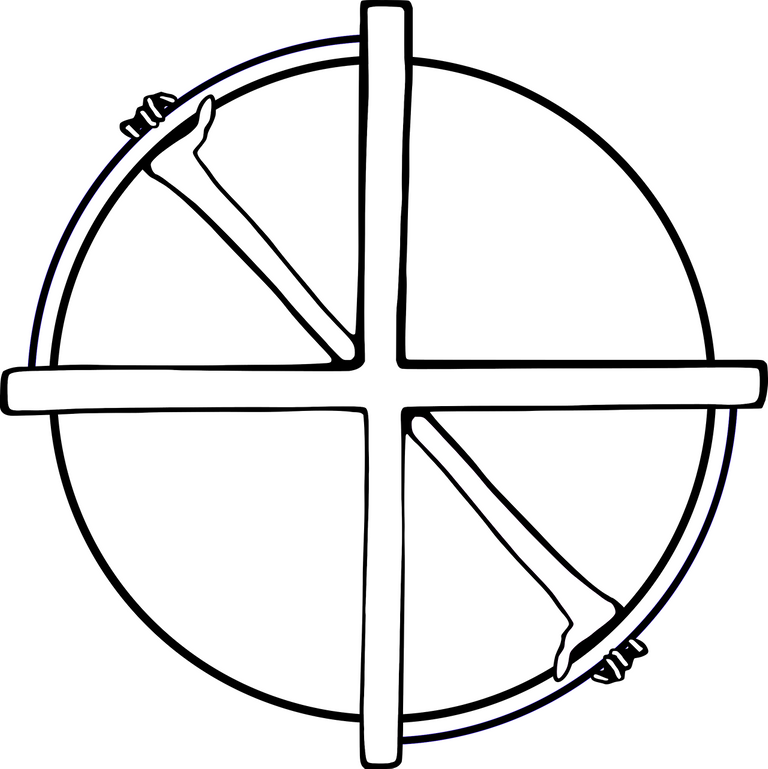
Image sources:
- Cover image: Using images from Adobe Stock
- 1: Art from the animated opening sequence from The Wheel of Time, Amazon Prime Video
- 2: The Wheel of Time Episde 2: Shadow’s Waiting, Amazon Prime Video
- 3: The Wheel of Time Episde 8: The Eye of the World, Amazon Prime Video
- 4: The Wheel of Time Episde 5: Blood Calls Blood, Amazon Prime Video
- 5: The Wheel of Time Episde 2: Shadow’s Waiting, Amazon Prime Video
- 6: The Wheel of Time Episde 5: Blood Calls Blood, Amazon Prime Video
- 7: OpenClipArt.org

The text content of this post work is licensed under a Creative Commons Attribution 4.0 International License. Please credit the source of this post as the Hive Blockchain Network if you republish.
The rewards earned on this comment will go directly to the person sharing the post on Twitter as long as they are registered with @poshtoken. Sign up at https://hiveposh.com.